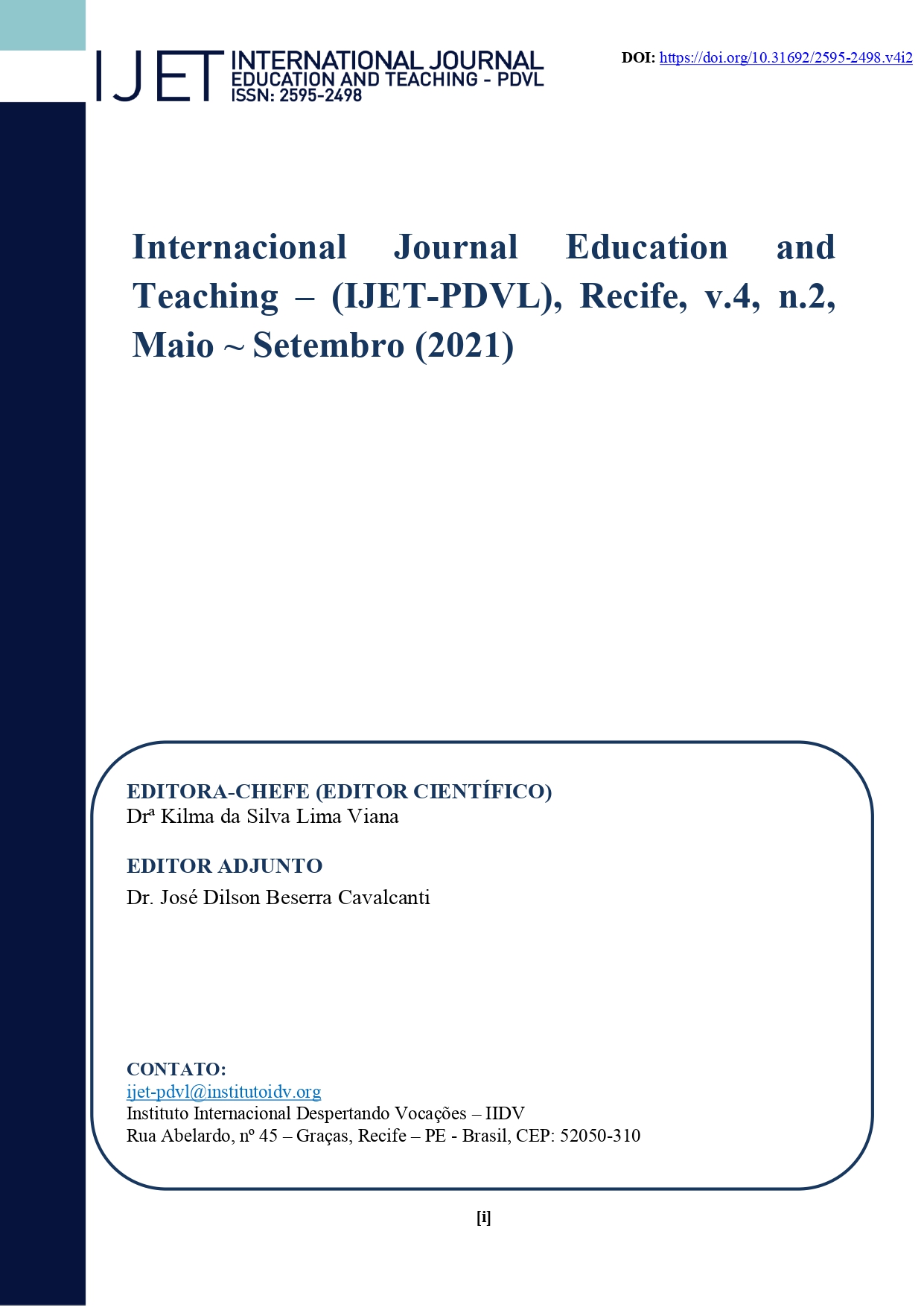ANÁLISE DA APLICAÇÃO DO SOFTWARE EDUCACIONAL: AVOGADRO COMO FERRAMENTA DIDÁTICA NO ENSINO DE QUÍMICA
Palavras-chave:
Geometria molecular, Softwares no Ensino de Química, AvogadroResumo
A educação vem passando por diversas mudanças uma delas é a inserção de tecnologias educacionais em sala de aula, a informática proporciona muitos benefícios para o processo de ensino e aprendizagem, além de permitir que os professores possam desenvolver metodologias de ensino mais atraentes como o uso dessas novas tecnologias, tendo assim a oportunidade de fazer o uso de práticas de ensino que tenham grande potencial pedagógico, como o uso de softwares educacionais. O projeto foi desenvolvido por meio da pesquisa exploratória, a coleta de dados foi realizada em 3 etapas e todos os questionários aplicados foram formulados através do Google Forms, que é uma ferramenta onde pode-se criar formulários e questionários diversos, os sujeitos que participaram da pesquisa foram 11 professores e 3 estudantes ambos da rede pública de ensino, na primeira etapa, foi realizado um questionário com os professores com o total de 6 perguntas abertas e fechadas, online, utilizando o Google Forms, a segunda etapa, se consistiu em identificar quais as percepções dos estudantes acerca da aprendizagem de geometria molecular e na terceira e ultima etapa, analisamos a aplicação do software Avogadro como ferramenta didática no ensino de química na visão do estudantes. Por fim consideramos então que a proposta de utilização do software Avogadro para construção de moléculas com informações como polaridade, nuvem eletrônica, estrutura geométrica em 3D, é de fato um fator que poderá contribuir para que os estudantes do ensino médio através da tecnologia, tenham mais autonomia na construção do conhecimento em Geometria molecular.
Downloads
Referências
BORGES, H. (1999). Uma classificação sobre a utilização do computador pela escola. Fortaleza, Revista Educação em Debate, 1 (27): 135-138.
Brasília: MEC, 2000. BRASIL, Parâmetros Curriculares Nacionais: terceiro e quarto ciclos: Apresentação dos Temas Transversais. Brasília: MECSEF, 1998.
CARNEIRO, M. H. S. As Imagens no Livro Didático. In: Encontro Nacional de Pesquisa em Ensino de Ciências, I, 27-29 de Novembro de 1997, Águas de Lindóia, SP.
CETIC. Pesquisa sobre: o uso das TIC nas escolas brasileiras: TIC Educação 2012. São Paulo, 2013.
COSTA, M. M. M. Investigação sobre as novas modalidades de educação no ensino de química: uso do método mobile learning. 2017. 99 f. Monografia (Licenciatura em Química) - Universidade Estadual do Ceará, Fortaleza, 2017.
JUCÁ, S.C (2006). A relevância dos softwares educativos na educação profissional. (Online). http://pepsic.bvsalud.org/pdf/cc/v8/v8a04.pdf.
MORENO, E, L. e Heidelmann, S, P. Recursos Instrucionais Inovadores para o Ensino de Química. 2016. Quím. nova esc. – São Paulo-SP, BR. Recursos Instrucionais Inovadores para o Ensino de Química.
PEREIRA, D. I. S. Softwares educacionais no ensino de Química. Monografia (Especialização em Fundamentos da Educação: Práticas Pedagógicas Interdisciplinares) – Universidade Estadual da Paraíba, 2014
Sousa, A. S. UTILIZAÇÃO DE APLICATIVOS MÓVEIS PARA MELHOR COMPREENSÃO DOS ASSUNTOS DE GEOMETRIA MOLECULAR. POLARIDADE E FORÇAS INTERMOLECULARES, NO CONTEXTO DE APRENDIZAGEM SIGNIFICATIVA. TCC. Fortaleza, 2019.
Downloads
Publicado
Edição
Seção
Licença
Copyright (c) 2021 Wellington de Souza Ferreira , Rauã Bezerra da Silva, Amanda Santos de Andrade, Kymberli Francisca de Souza , Sanderson Hudson da Silva Malta (Autor)

Este trabalho está licenciado sob uma licença Creative Commons Attribution 4.0 International License.






